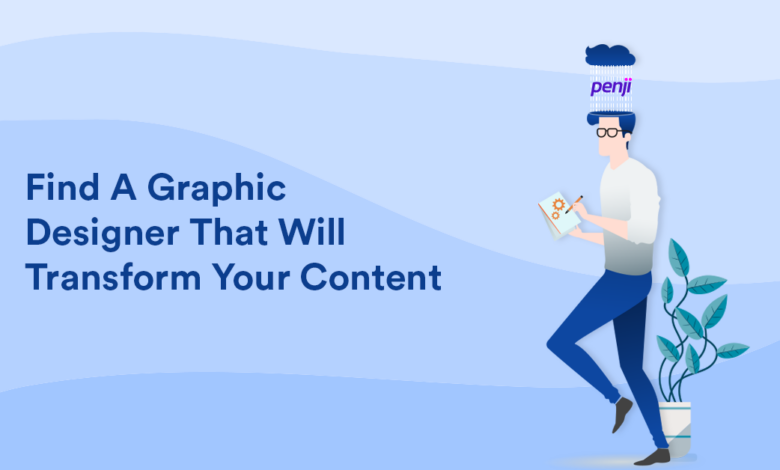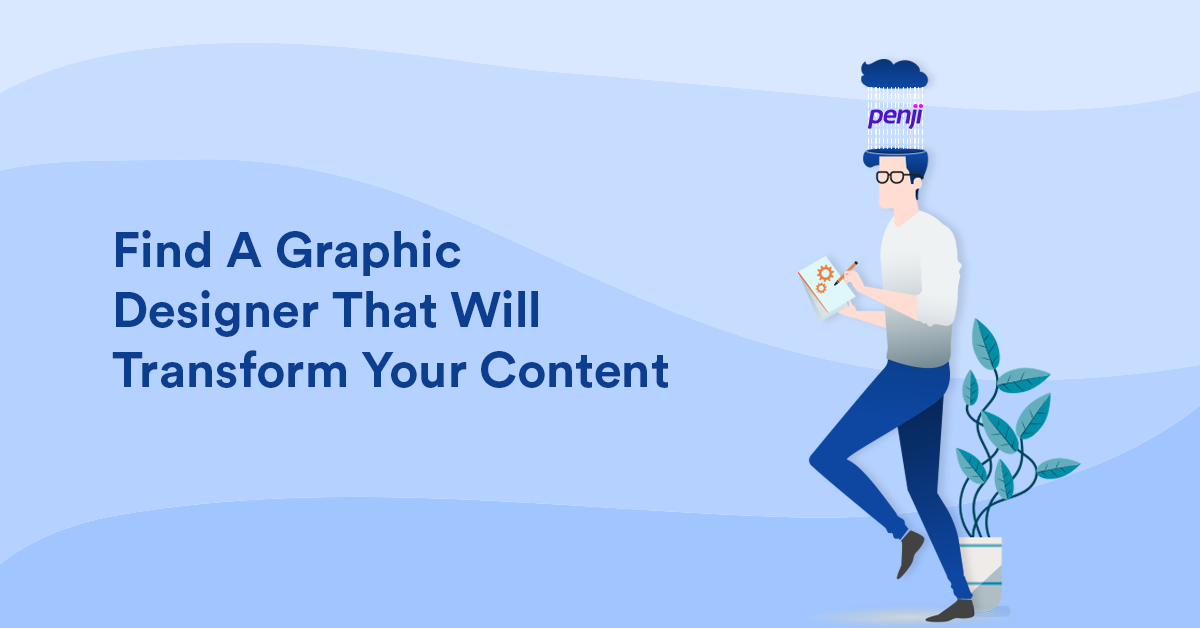
Why a Specialist Web Designer Sees Your Business Better
Why a specialist web designer can see your business better than you can? It’s not about ego, it’s about perspective. Think of it like this: you’re deeply immersed in the day-to-day operations, the minutiae of your business. A web designer, however, brings a fresh, objective eye, trained to analyze your online presence from a user’s perspective and a strategic standpoint.
They see the bigger picture, the untapped potential hidden within your current website and online strategy. This isn’t about replacing your business acumen, but rather enhancing it with a crucial skill set that directly impacts your bottom line.
They possess a unique blend of design principles, technical expertise, and data-driven insights that allow them to identify opportunities and challenges you might miss. From understanding user experience (UX) to optimizing for search engines (), a skilled web designer acts as a crucial bridge between your business goals and your online audience, ensuring a seamless and effective user journey that ultimately drives growth and profitability.
Understanding the Specialist’s Perspective
You pour your heart and soul into your business, but sometimes, a fresh pair of eyes is needed to truly see its potential. While you’re intimately familiar with your products and services, a specialist web designer brings a unique skillset that goes beyond just making things look pretty. Their perspective is shaped by training, experience, and a deep understanding of design principles that can significantly impact your online visibility and ultimately, your bottom line.A specialist web designer’s training differs significantly from a business owner’s.
While you’re likely an expert in your industry, their expertise lies in the intricacies of web design, user experience (UX), and search engine optimization (). They’ve spent years honing their skills in areas like visual communication, information architecture, and interaction design – skills crucial for creating a website that not only looks great but also effectively communicates your brand message and drives conversions.
This isn’t just about aesthetics; it’s about strategic design choices that directly influence how users interact with your site and, ultimately, your business success.
Design Principles and Their Impact
Specialist web designers understand fundamental design principles that often go unnoticed by business owners. For instance, they’re acutely aware of the importance of visual hierarchy – the way elements are arranged to guide the user’s eye and emphasize key information. A business owner might instinctively place their logo prominently, but a designer would consider the overall layout, ensuring a clear path for users to navigate the site and find what they need.
They understand concepts like white space, typography, and color theory, using them strategically to create a visually appealing and user-friendly experience. Consider the impact of poor typography – illegible text can drive users away instantly, impacting your conversion rates. A designer understands these nuances and ensures readability and visual appeal are optimized.
User Experience (UX) and Business Visibility
A designer’s understanding of UX is paramount. UX goes beyond aesthetics; it’s about how usersfeel* when interacting with your website. A well-designed website anticipates user needs, making it intuitive and easy to navigate. A designer will conduct user research, testing different design iterations to identify pain points and areas for improvement. For example, a poorly designed checkout process can lead to cart abandonment, costing your business valuable sales.
A designer can identify and rectify such issues, resulting in improved conversion rates and increased revenue. They consider aspects like information architecture (how information is organized on the site), navigation, and accessibility to ensure a positive user experience, boosting your business visibility through positive word-of-mouth and improved search engine rankings.
Identifying Usability Issues
Business owners often get so close to their businesses that they can overlook glaring usability issues. A designer, with their objective perspective, can readily identify these problems. For instance, a designer might notice a confusing navigation menu, a cluttered homepage, or slow loading times – all factors that negatively impact user experience. They might identify broken links, outdated content, or a lack of clear calls to action, all hindering your ability to effectively reach and engage your target audience.
By using tools and techniques like heatmaps and A/B testing, designers can pinpoint precisely where users are struggling and suggest targeted improvements. Imagine a scenario where a vital piece of information, like contact details, is buried deep within your website; a designer would immediately identify this and recommend a more prominent placement. This level of detailed analysis ensures your website is not only visually appealing but also highly functional and user-friendly.
The Broader View of Online Strategy
You might know your business inside and out, but a specialist web designer brings a unique perspective – a holistic view of your online presence that goes beyond the aesthetics of your website. They see the interconnectedness of design, functionality, and marketing, ultimately impacting your bottom line in ways you might not have considered. This broader perspective is crucial for building a truly successful online strategy.A business owner’s focus is often understandably inward: managing daily operations, interacting with clients, and striving to meet immediate goals.
This laser-like concentration, while essential, can sometimes limit the ability to see the bigger picture of online marketing. A designer, however, approaches the project from a strategic standpoint, considering the overall user experience, optimization, and how the website fits within the larger digital landscape. They analyze your current online presence and identify areas for improvement that might not be immediately apparent to someone immersed in the daily grind.
Market Research and Competitor Analysis in Web Design
A crucial aspect of a designer’s strategic approach is conducting thorough market research and competitor analysis. This isn’t just about identifying competitors; it’s about understanding their strengths and weaknesses, their target audience, and their online strategies. This analysis informs design decisions, ensuring your website stands out from the competition and effectively targets your ideal customer. For example, a designer might notice that competitors are using a particular type of interactive element that’s highly engaging, prompting them to incorporate a similar feature, but with a unique twist that aligns with your brand’s identity.
This data-driven approach ensures that your website isn’t just visually appealing, but also strategically positioned for success.
Improving Business Outcomes Through Online Marketing Understanding
A skilled web designer understands the interplay between web design and online marketing. They know that a beautiful website is useless if it’s not discoverable or engaging. This understanding manifests in several key areas. For instance, they’ll incorporate best practices into the website’s architecture and content, ensuring that your site ranks higher in search engine results.
They’ll also consider the user journey, designing a website that is intuitive and easy to navigate, leading to increased conversions. Furthermore, they can advise on incorporating elements that support social media marketing, email marketing, and other online promotional strategies. A designer might suggest specific calls-to-action, strategically placed throughout the site, to guide users toward desired outcomes, such as making a purchase or signing up for a newsletter.
This integrated approach maximizes the website’s potential to generate leads and drive sales.
Technical Expertise and its Business Impact
Your website isn’t just a digital brochure; it’s the heart of your online presence, directly impacting your bottom line. While you might understand your business intimately, the technical nuances of web design often remain hidden, impacting efficiency and profitability in ways you might not realize. A specialist web designer brings this crucial technical expertise to the table, transforming your online presence from a static display into a dynamic, revenue-generating machine.
The technical aspects of web design are far more than just aesthetics. They encompass the underlying architecture, the code that makes it all work, and the strategies employed to ensure visibility and security. These factors directly influence user experience, search engine rankings, and ultimately, your conversion rates. Ignoring these technical details can lead to lost opportunities and a diminished online presence.
Coding’s Contribution to Business Success
Clean, efficient, and well-structured code is the backbone of a high-performing website. It dictates how quickly your pages load, how easily they navigate, and how well they integrate with other systems. Slow loading times, for example, can lead to high bounce rates – visitors leaving your site before they even see your products or services. Conversely, well-optimized code contributes to a seamless user experience, encouraging visitors to explore and engage.
Consider the impact of a site that takes five seconds to load versus one that loads instantly; the difference in user satisfaction and conversions can be significant. A specialist web designer understands the intricacies of various coding languages (like HTML, CSS, and JavaScript) and utilizes best practices to ensure optimal site performance.
Optimization and its Impact on Visibility
Search Engine Optimization () is the art and science of making your website easily discoverable by search engines like Google. This involves a multitude of technical aspects, including research, on-page optimization (title tags, meta descriptions, header tags), and off-page optimization (link building). A specialist web designer understands these intricate processes and implements them effectively, ensuring your website ranks higher in search results.
Higher rankings mean more organic (non-paid) traffic, leading to increased brand awareness, lead generation, and ultimately, sales. A poorly optimized website, on the other hand, might struggle to attract visitors, even with excellent content.
Website Security and its Role in Building Trust
In today’s digital landscape, website security is paramount. Data breaches and cyberattacks can severely damage your reputation and cost you significant financial losses. A specialist web designer understands the importance of implementing robust security measures, such as SSL certificates (ensuring secure HTTPS connections), regular security updates, and firewalls. These measures protect sensitive customer data, build trust with visitors, and safeguard your business from potential threats.
A secure website reassures customers that their information is safe, encouraging them to make purchases and engage with your brand.
Technical Skill Comparison: Business Owner vs. Web Designer, Why a specialist web designer can see your business better than you can
| Skill | Business Owner | Web Designer |
|---|---|---|
| HTML/CSS/JavaScript | Basic understanding or none | Expert-level proficiency |
| Optimization | Limited knowledge; may use basic tools | Deep understanding and implementation experience |
| Website Security | Awareness of importance; may outsource security | Proficient in implementing and maintaining security measures |
| Performance Optimization | Limited understanding of technical aspects | Expert in optimizing site speed and efficiency |
The table above highlights the disparity in technical expertise. While a business owner might have a general understanding of the importance of these elements, a web designer possesses the in-depth knowledge and practical skills to implement them effectively, translating into tangible business benefits.
Translating Technical Expertise into Business Benefits
The impact of a specialist web designer’s technical expertise is directly reflected in improved business performance. For example, a well-optimized website with fast loading speeds can lead to significantly higher conversion rates. Studies show that even a small improvement in loading time can result in a noticeable increase in sales. Similarly, a strong strategy can drive organic traffic, reducing reliance on costly paid advertising.
A secure website protects sensitive customer data, building trust and loyalty, which contributes to long-term business success. These are not just theoretical benefits; they are quantifiable improvements that directly impact the bottom line.
Visual Communication and Brand Identity

Source: pinimg.com
Your business is more than just a product or service; it’s a feeling, a promise, a story. A specialist web designer understands this, translating your brand essence into a compelling visual language that resonates with your target audience. They go beyond simply making your website look pretty; they craft a visual identity that strengthens your brand and drives business growth.A skilled designer possesses a deep understanding of visual communication principles and their impact on brand perception.
They can analyze your existing brand assets, or help you develop them from scratch, ensuring a cohesive and impactful visual presence across all online platforms. This holistic approach ensures consistency and reinforces brand recognition.
Effective Visual Representation of a Brand
A specialist web designer leverages various techniques to create a strong visual identity. For example, they carefully select color palettes that evoke specific emotions and align with your brand personality. A vibrant color scheme might communicate energy and innovation, while a more muted palette could project sophistication and reliability. Furthermore, typography plays a crucial role in conveying brand personality.
A playful font might suit a youthful brand, while a classic serif font could lend an air of authority. Finally, the choice of imagery – from photography to illustrations – is essential in establishing the desired brand aesthetic and conveying key messages. High-quality, professional imagery is paramount for creating a positive and credible brand image.
Comparison of Design Styles and Their Impact on Brand Perception
Different design styles dramatically affect how consumers perceive a brand. A minimalist design, characterized by clean lines and a limited color palette, projects a sense of sophistication and modernity. Conversely, a more maximalist approach, with bold colors and intricate details, can communicate creativity and exuberance. A vintage-inspired design might evoke nostalgia and trustworthiness, while a futuristic style can suggest innovation and forward-thinking.
The choice of style must carefully reflect the brand’s personality and target audience. For example, a luxury car brand might choose a minimalist and elegant design, while a children’s toy company might opt for a vibrant and playful style.
Visual Elements Contributing to Brand Recognition and Customer Loyalty
Visual consistency is key to building brand recognition and fostering customer loyalty. When a customer consistently encounters the same logo, color palette, and typography across different platforms – website, social media, packaging – they develop a strong association with your brand. This familiarity leads to recognition and, ultimately, trust. For instance, the instantly recognizable golden arches of McDonald’s or the Apple logo are prime examples of how strong visual branding creates instant brand recall and customer loyalty.
These iconic visuals are deeply ingrained in the collective consciousness, creating a powerful connection with consumers.
Design Elements and Their Effect on Brand Communication
The impact of design elements on brand communication is profound. Consider the following:
- Color Palettes: Evoke emotions and associations. For example, blue often signifies trust and stability, while red can represent energy and excitement.
- Typography: Communicates personality and readability. Serif fonts often convey sophistication, while sans-serif fonts can appear modern and clean.
- Imagery: Conveys messages and establishes brand aesthetic. High-quality photography and illustrations build trust and credibility.
- Layout and Composition: Influences readability and user experience. A well-organized layout guides the user’s eye and enhances engagement.
- White Space: Provides visual breathing room and improves readability. Strategic use of white space enhances the overall design’s impact.
- Iconography: Adds visual interest and aids navigation. Well-designed icons enhance usability and reinforce brand identity.
Data-Driven Design Decisions: Why A Specialist Web Designer Can See Your Business Better Than You Can

Source: hostinger.com
A specialist web designer doesn’t just create visually appealing websites; they build websites that work. This means leveraging data analytics to inform every design choice, ensuring the site effectively achieves its business goals. Instead of relying on gut feeling, data provides concrete evidence to guide the design process, leading to a more successful outcome for the client.Data analytics provides the objective insights needed to make informed design choices.
By tracking key metrics, designers can understand how users interact with the website, identify areas for improvement, and ultimately optimize the site for conversions and engagement. This data-driven approach moves beyond subjective opinions, offering a clear path to a better user experience and stronger business results.
Key Performance Indicators (KPIs) for Website Effectiveness
Understanding which KPIs to track is crucial. These metrics provide a quantifiable measure of website success and guide design decisions. Ignoring relevant KPIs can lead to wasted resources and a website that fails to achieve its objectives. The following KPIs are frequently used:
- Bounce Rate: The percentage of visitors who leave the website after viewing only one page. A high bounce rate suggests problems with the website’s content, design, or user experience.
- Conversion Rate: The percentage of visitors who complete a desired action, such as making a purchase, filling out a form, or subscribing to a newsletter. This is a key indicator of the website’s effectiveness in achieving its business goals.
- Average Session Duration: The average amount of time visitors spend on the website. A longer average session duration suggests engaging content and a positive user experience.
- Page Views per Visit: The average number of pages a visitor views during a single session. A higher number indicates users are exploring the website and finding its content valuable.
- Click-Through Rate (CTR): The percentage of users who click on a specific element, such as a link or button. A low CTR may indicate that the element is not clearly visible or engaging enough.
A/B Testing and Design Choices
A/B testing is a crucial method for data-driven design. This involves creating two versions of a webpage (A and B), each with a slightly different design element, and then showing each version to a separate group of users. By analyzing the results, designers can determine which version performs better based on the chosen KPIs. For example, one version might feature a different call-to-action button color or placement.
The version that yields a higher conversion rate, lower bounce rate, or other desired outcome is then implemented across the website. This iterative process allows designers to continuously optimize the website’s design based on real user behavior. Let’s say Version A had a green button and Version B had a blue button. If Version B consistently resulted in a 15% higher click-through rate on the button, then the blue button would be the preferred design choice.
Sometimes, we’re too close to our businesses to see the bigger picture. A specialist web designer, however, brings an objective eye, spotting opportunities you might miss. For example, they might suggest leveraging video marketing, like learning how to effectively getting it on with youtube , to boost your brand’s visibility. This outside perspective is invaluable for refining your online presence and ultimately achieving your business goals, something often overlooked by business owners focused on day-to-day operations.
Data-Driven Design and Improved User Engagement and Business Growth
By using data to inform design decisions, designers can create websites that are not only aesthetically pleasing but also highly effective. A website optimized based on user behavior data leads to improved user engagement. Users find what they need more easily, spend more time on the site, and are more likely to convert. This, in turn, directly contributes to business growth by increasing sales, leads, and brand awareness.
For example, a redesign based on A/B testing results might increase conversion rates by 20%, leading to a significant boost in revenue. This data-driven approach allows for continuous improvement and ensures the website remains effective and relevant over time.
Closure
Ultimately, partnering with a specialist web designer isn’t about outsourcing; it’s about strategic augmentation. They bring a level of expertise and objectivity that can dramatically improve your online presence, leading to increased brand recognition, higher conversion rates, and ultimately, a more successful business. By leveraging their skills, you’re not just building a website; you’re building a powerful tool for growth, one that’s designed to resonate with your target audience and propel your business forward.
So, consider this: are you maximizing your online potential, or are you just scratching the surface?
Answers to Common Questions
What if I already have a website? Why do I need a specialist?
Even existing websites can benefit immensely from a specialist’s review. They can identify areas for improvement in terms of design, functionality, , and overall user experience that you might have overlooked. A fresh perspective can often lead to significant improvements in conversions and user engagement.
How much does hiring a specialist web designer cost?
The cost varies greatly depending on the scope of the project, the designer’s experience, and the complexity of your needs. It’s best to get quotes from several designers to compare pricing and services.
How do I find a reputable web designer?
Look for designers with a strong portfolio showcasing their previous work, positive client testimonials, and a clear understanding of your business goals. Check online reviews and ask for references.
Can a web designer help with my marketing strategy?
Many web designers have expertise in online marketing and can offer valuable advice on , content marketing, and other digital strategies to complement your website design.





